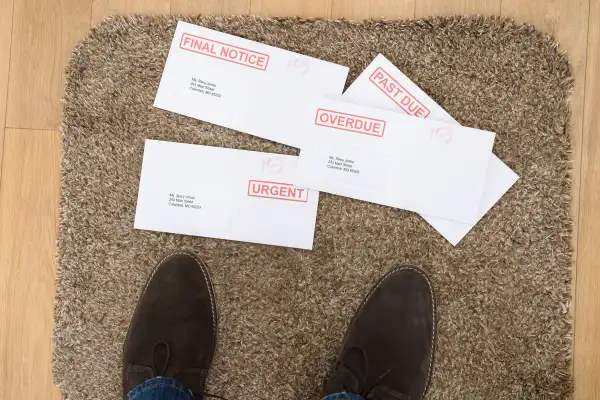What to Do if You're Behind on Your Student Loan Payments

You’ve missed a payment—or several—on your student loans. You’re not alone. At the end of last year, more than 7 million people were at least nine months behind, the point at which student loans go into default. Millions more have missed a few payments without hitting that nine-month cutoff.
You shouldn’t take too much solace in having so much company, though.
Falling behind on your student loans can be costly in the long run. Your credit rating will suffer, late fees will pile up and continue to grow with interest, and in the most extreme cases, the federal government can confiscate your tax refund and wages to pay off your debt.
You’ve likely heard all this before, or, at the very least, you know there are consequences for missing payments, even if you don’t know what they are.
But life happens, as they say, and here you are—either delinquent or in default. Here's the good news: Even if you’re living paycheck to paycheck, you can still get your loan back in good standing with some effort.
This is what you need to do.
First, figure out what you owe
If you’ve been avoiding correspondence with your loan servicer (the middlemen who handle your payments), you may not know how much you owe or how far behind you are. For federal loans, go to the National Student Loan Data System to find out. Private loans may be trickier, because there isn't a similar one-stop system for private lending. You’ll have to get the information directly from each individual lender or you can look at www.annualcreditreport.com.
Then, make a payment plan
There are a few possible scenarios here, but a smart next move across the board is to get in touch with your loan servicer. Note that if you have several different loans, you may have more than one servicer.
If you’re only slightly behind (say, less than a couple months), and you earn enough money to afford the monthly payments, pay up. Then set up automatic monthly billing so you don’t fall behind in the future. Added bonus: Most automatic billing comes with a slight interest rate reduction that can save you hundreds of dollars over the life of your loan.
If you've just fallen behind but can’t afford the monthly payment, look into an income-based repayment plan, which will set the amount you have to pay each month to as little as 10% of your disposable income. For short-term financial challenges, you could also consider a forbearance, in which your loan payments will be temporarily postponed. Remember, though, that your loan still racks up interest while in forbearance, so the total amount you owe will grow.
At this phase, when you’ve just started to fall behind, your servicer should be doing everything it can to get you back on track, says Terrence Banks, a student loan and credit counselor with ClearPoint Credit Counseling. The level of help you get may vary, though, depending on who services your loan, so if you feel you’re not getting the information you need, read these steps for dealing with a poor loan servicer.

The real damage, Howard says, is after 270 days, or nine months, of missed payments. That’s when you’re officially in default, and your credit rating will be seriously damaged. Your debt may be sent to a collection agency. You’re also no longer eligible for forbearance, deferment, or income-based plans.
For federal loans, you have two main options: consolidation or rehabilitation. The National Consumer Law Center's Student Loan Borrower Assistance project has a helpful comparison of consolidation and rehabilitation here, and you can also learn about your default status at the federal government's debt resolution website.
In general, you can consolidate all your existing loans into one new loan and resume making regular payments, or you can rehabilitate your loan, which requires deciding on an affordable monthly payment amount with your servicer or the collection agency, and then making nine on-time payments in a row. Rehabilitation takes longer, but it also erases the default notation from your credit report.
In both cases, your payments will likely be based on how much you'd owe under the federal government's income-based repayment plans. That means your minimum payment could be as low as $5 a month, says Rick Ross, co-founder of College Financing Group, a consulting firm that specializes in paying for college. (Under normal income-based repayment, some borrowers' monthly bill could actually be $0. But to get your loans out of default, you have to demonstrate that you're willing and able to make consistent payments, hence the $5 amount.)
Under both consolidation and rehabilitation, you will have to pay some collection and late fees.
Need a refresher on all that? The Consumer Financial Protection Bureau has this helpful guide to walk you through which of the above options would be best for you.
Finally, don't fall behind again
Both consolidation and rehabilitation are one-time offers. If you come back from default but find yourself struggling again, see if you can qualify for smaller payments under an income-driven plan. Keep in regular contact with your servicer, and contact the U.S. Department of Education's loan ombudsman or file a complaint with the CFPB if you're not getting the answers you need from your servicer.
"If you fall behind, don't keep digging," Banks says. "Call for help."
